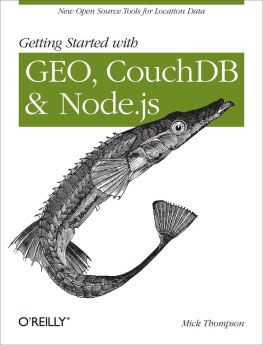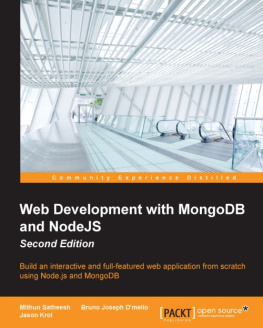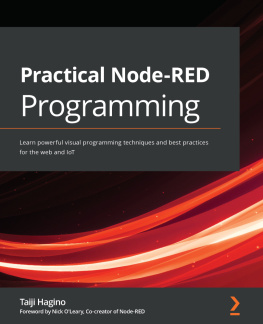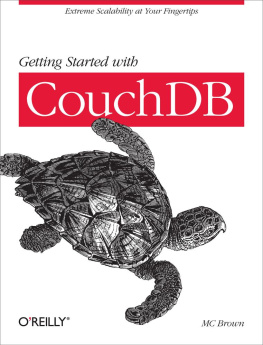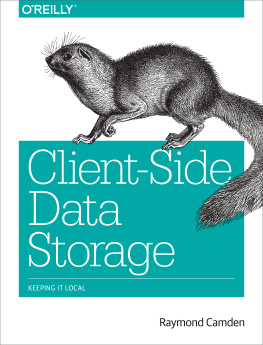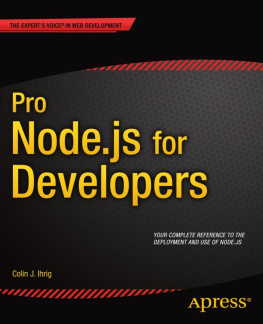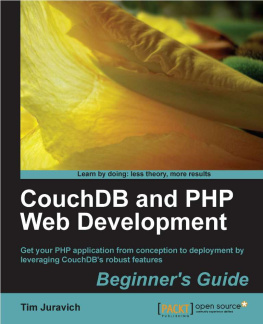Note
Safari Books Online is an on-demand digital library that lets you easily search over 7,500 technology and creative reference books and videos to find the answers you need quickly.
With a subscription, you can read any page and watch any video from our library online. Read books on your cell phone and mobile devices. Access new titles before they are available for print, and get exclusive access to manuscripts in development and post feedback for the authors. Copy and paste code samples, organize your favorites, download chapters, bookmark key sections, create notes, print out pages, and benefit from tons of other time-saving features.
OReilly Media has uploaded this book to the Safari Books Online service. To have full digital access to this book and others on similar topics from OReilly and other publishers, sign up for free at http://my.safaribooksonline.com.
How to Contact Us
Please address comments and questions concerning this book to the publisher:
| OReilly Media, Inc. |
| 1005 Gravenstein Highway North |
| Sebastopol, CA 95472 |
| 800-998-9938 (in the United States or Canada) |
| 707-829-0515 (international or local) |
| 707-829-0104 (fax) |
We have a web page for this book, where we list errata, examples, and any additional information. You can access this page at:
| http://oreilly.com/catalog/97814493075232 |
To comment or ask technical questions about this book, send email to:
For more information about our books, courses, conferences, and news, see our website at http://www.oreilly.com.
Find us on Facebook: http://facebook.com/oreilly
Follow us on Twitter: http://twitter.com/oreillymedia
Watch us on YouTube: http://www.youtube.com/oreillymedia
Chapter 1. Node.js
Node.js has quickly become a very popular asynchronous framework for JavaScript. It is built on top of the same V8 engine that the Chromium and Google Chrome web browsers use to interpret JavaScript. With the addition of networking and file system API support, it has quickly proved to be a capable tool for interacting with IO in a asynchronous way.
There are many other libraries in several other languages that can accomplish the same asynchronous handling of IO. There are different conventions, schools of thought, and preferences of developers. Node.js uses callbacks for the developer to notified of the progress of asynchronous operations. Callbacks are nothing new for developers accustom to Pythons Twisted library or other similar frameworks. Callbacks can be a very easy and powerful way to manage the flow of an appilication, but as with anything new they also offer an opportunity to trip up a developer. The first thing to keep in mind when getting started with asynchronous development is that execution might not follow the same squence every time.
Getting Started with Node.js
In order to install Node.js, download the source and build it. The main Node.js web page at http://nodejs.org can be very helpful in linking to downloads, source code repositories, and documentation. The master branch of the repository is kept in a semi-unstable state, so before building check out the most recent tagged version. For example: v0.4.9.
Note
The Node.js package manager or NPM is an extremely useful tool. It can handle installing, updating, and removing packages and their dependencies. Creating packages is also simple since the configuration for the package is contained in the package.json file. Installation instructions for NPM are included in the Node.js repository.
Asynchronous Callbacks
An Example case to show how asynchronous IO works is to make two HTTP requests and then combine the results. In the first example the request to the second web API will be nested in the callback from the first. This might seem like the easiest way to combine the results, but will not be the most effective usage of asynchronous IO.
Google provides an API that returns the elevation for a given latitude and longitude. The example requests will be of two points random points on Earth. To start create a function that will handles the request to the Google elevation API as well as parses the response:

